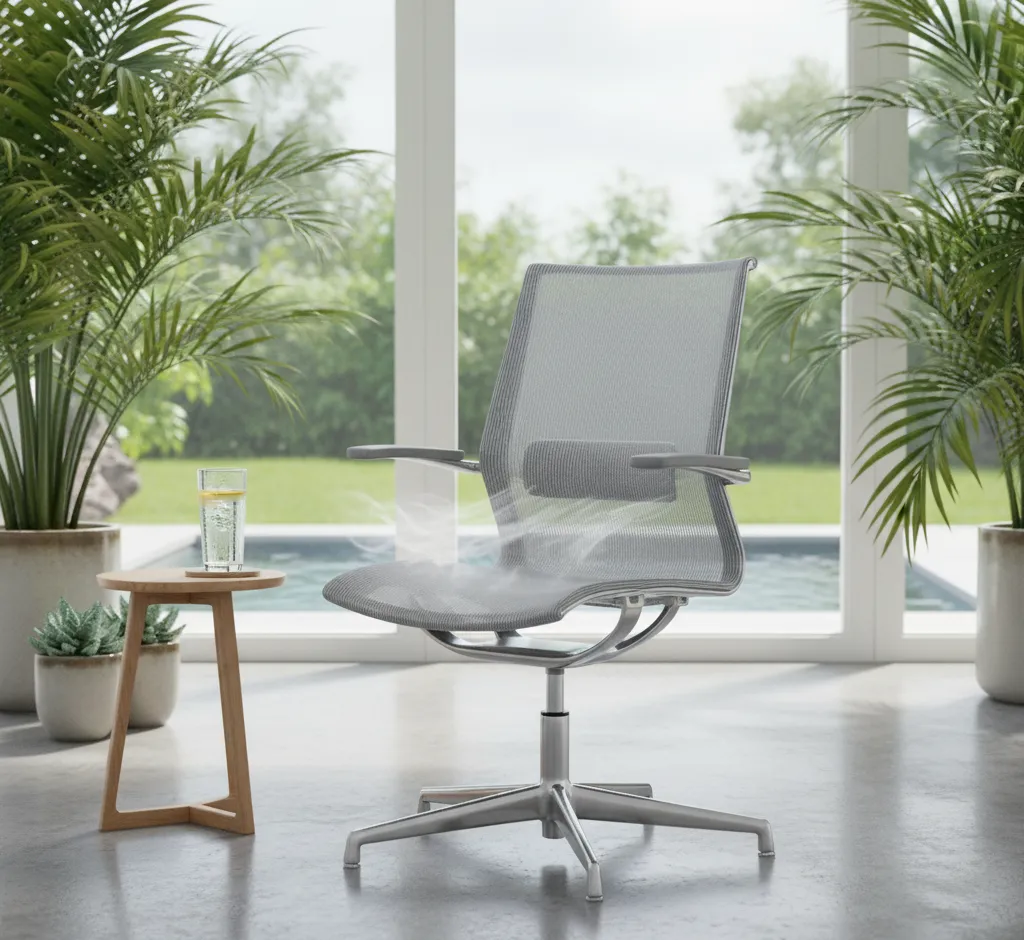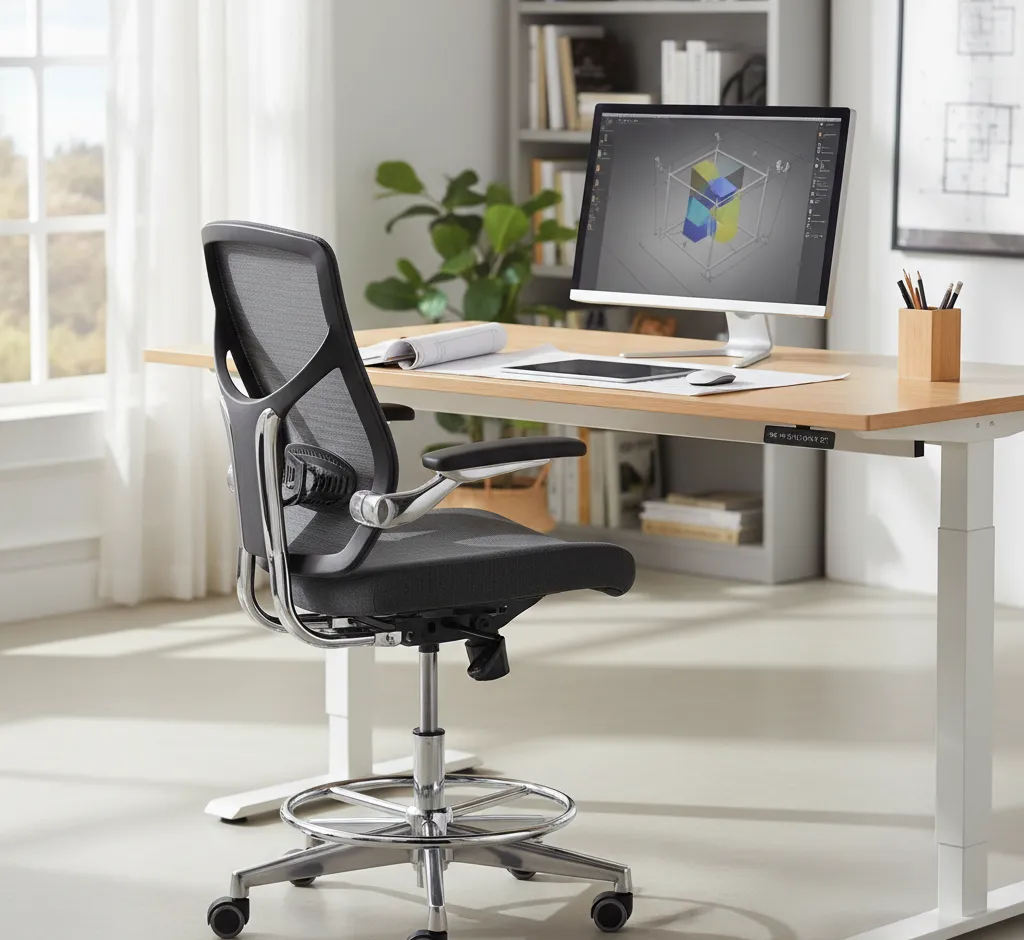The Ultimate Guide to Ergonomic Chairs for Tall People
A comprehensive guide for tall people seeking the perfect ergonomic office chair. Learn key factors like seat height, depth, backrest adjustability, and essential features to prevent pain and improve posture for users over six feet.

Why Standard Chairs Fail the Tall User
For individuals over six feet tall, finding an office chair that provides true ergonomic support is a perennial challenge. Standard office chairs are typically designed for users of average height, leading to a host of problems for taller individuals, including poor posture, restricted blood flow, and chronic pain. The search for a comfortable, supportive chair shouldn't feel like a quest, but often, it is.
The core issue lies in inadequate dimensions. A chair designed for someone 5'8" simply won't have the necessary height, depth, or back support for someone who is 6'4". This is why a targeted approach, focusing specifically on features for tall users, is essential for a truly ergonomic setup.
The Critical Ergonomic Factors for Tall Individuals
When evaluating ergonomic chairs, tall users must prioritize a few key features that ensure proper alignment and support. Neglecting any of these can negate the benefits of an otherwise high-quality chair.
1. Seat Height Range: Go Taller Than Average
The most fundamental requirement is a chair that allows your feet to rest flat on the floor with your knees at a comfortable 90-to-100-degree angle. For tall individuals, this often means a minimum seat height of **20 inches or more** from the floor to the top of the seat pan. Standard chairs often max out at 19 inches, which is simply too low and forces the knees upward, straining the lower back and hips.
- The Test: Ensure the chair's maximum height brings your hips slightly above your knees (a slightly open hip angle is beneficial).
2. Seat Depth: Preventing the "Edge Sit"
Seat depth refers to the distance from the front edge of the seat to the backrest. Taller users have longer femurs and require greater depth to support their legs fully. If the seat is too shallow, only a portion of the thigh is supported, forcing the user to sit on the edge (the "edge sit"), which places undue pressure on the hamstrings and restricts circulation behind the knees. This can lead to numbness and discomfort.
- The Ideal: Look for a chair with a seat depth of at least **20 inches or more**.
- Adjustability is Key: Chairs with a **sliding seat pan** (depth adjustment) are ideal, allowing you to fine-tune the depth so that there are about 2–3 finger-widths between the back of your knees and the front edge of the seat.
3. Backrest Height and Lumbar Support Placement
A tall user needs a backrest that is high enough to support their entire back and, ideally, their shoulders and head. More importantly, the lumbar support must be correctly positioned.
- High Backrest: Opt for high-back models that extend well above the shoulders. Some manufacturers offer 'Tall' or 'XL' versions specifically for this purpose.
- Adjustable Lumbar Support: The lumbar curve of the backrest must align with the natural curve of your lower spine. For a tall person, the lumbar support on a standard chair often ends up supporting the mid-back instead. Look for chairs where the lumbar support is **height-adjustable** to ensure it hits the small of your back correctly.
4. Armrest Adjustability
Armrests are often an afterthought, but they are crucial for reducing tension in the shoulders and neck. If the armrests are too low, a tall user will slump or crane their neck to compensate. They should allow your arms to rest with your elbows bent at 90 degrees, keeping your shoulders relaxed and level.
- 4D Adjustability: The best options feature **4D armrests** (height, width, depth, and pivot) with a generous **maximum height**. This is non-negotiable for finding the right resting position for long arms.
Evaluating Chair Types for Tall People
The Drafters/Task Chair Category
While often overlooked, specialized drafting or task chairs often feature longer gas cylinders to reach drafting table height, which coincidentally makes them excellent alternatives for tall users seeking a high seat maximum. However, be cautious: while the seat height may be right, the backrest and seat depth may still be too shallow.
The 'Big & Tall' Designation: A Closer Look
Many chairs are marketed as "Big & Tall." While these are a good starting point, they are primarily designed for higher weight capacities and may not always provide the necessary vertical dimensions. Always check the manufacturer's specification sheet for the actual seat height, seat depth, and backrest height, rather than relying solely on the 'Big & Tall' label.
Final Checklist for Your Purchase
Before committing to a chair, utilize this checklist to ensure it truly meets the needs of a tall ergonomic profile:
- **Maximum Seat Height:** Is it 20 inches or more?
- **Seat Depth (Adjustable):** Can it be set to 20 inches or greater?
- **Backrest:** Is it tall enough to support your shoulders, or does it offer adjustable lumbar placement?
- **Armrests:** Do they adjust high enough to support a relaxed 90-degree elbow angle?
- **Weight Rating:** Does the chair support your body weight safely (even if you aren't considered 'big')?
Investing in a properly fitted ergonomic chair is an investment in your long-term health and productivity. By focusing on the critical dimensions of seat height, seat depth, and backrest adjustability, tall individuals can finally find a chair that offers true, tailored support.


